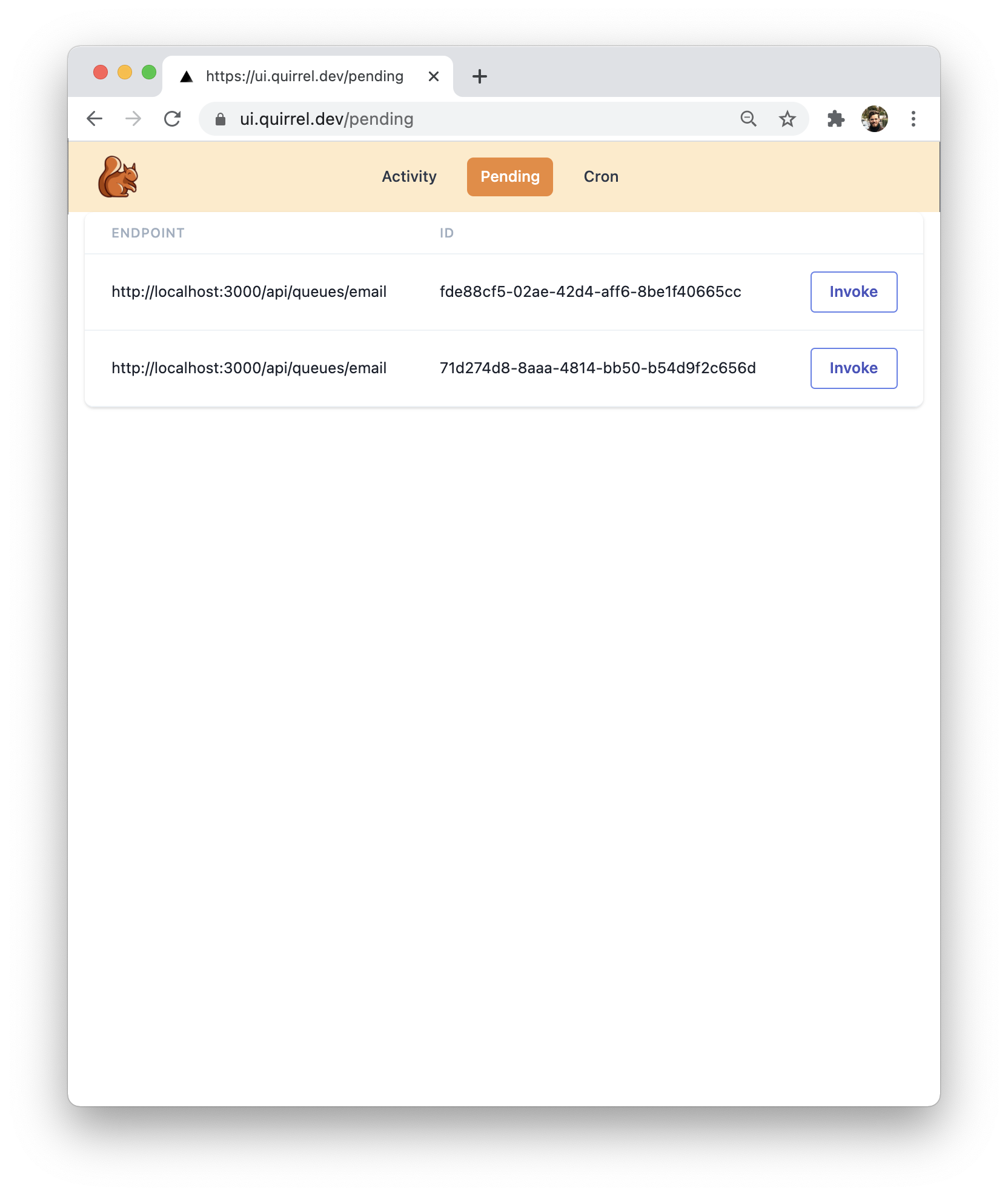Next.js
This document guides you through setting up Quirrel and creating your first queue in an existing project.
If you're looking for a tutorial instead, check out the Water Drinking Reminder Tutorial.
Installation
Architecturally, Quirrel consists of two main parts:
- The Quirrel server receives jobs from your application and then makes requests back to it whenever a job is due.
- The Quirrel client is used by your application to interface with the server.
First, we're gonna setup the Quirrel server locally.
To install it, simply run npm install quirrel in your project root,
then start it by running npx quirrel.
That's it!
You can use concurrently
to have the Quirrel server be started together with Next:
"scripts": {
"dev": "concurrently 'next dev' 'quirrel'"
}
This is all we need installed to create our first Queue!
Your first Queue
- App Router
- Pages Router
Create a new Router Handler at app/api/queues/email.js and paste the following:
import { Queue } from "quirrel/next-app"
export const emailQueue = Queue(
"api/queues/email", // 👈 the route it's reachable on
async job => {
await email.send( ... )
}
)
export const POST = emailQueue
Create a new API Route at pages/api/queues/email.js and paste the following:
import { Queue } from "quirrel/next-pages"
export default Queue(
"api/queues/email", // 👈 the route it's reachable on
async job => {
await email.send( ... )
}
)
Up top, we're importing Queue, which is a function that we use to declare a new Queue and export it as default.
Queue takes two arguments.
The first one is the location of the API Route it's been declared in.
This is required for the Quirrel server to know where jobs need to be sent upon execution.
The second one is a worker function that actually executes the job.
In this example, it sends an email.
Now that we declared the Queue, using it is straight forward. Simply import it and enqueue a new job:
- App Router
- Pages Router
Create a new Router Handler at app/api/queues/email.js and paste the following:
import { emailQueue } from "app/api/queues/email"
// could be some API route / getServerSideProps / ...
export default async (req, res) => {
await emailQueue.enqueue(
..., // job to be enqueued
{ delay: "24h" } // scheduling options
)
}
import EmailQueue from "pages/api/queues/email"
// could be some API route / getServerSideProps / ...
export default async (req, res) => {
await EmailQueue.enqueue(
..., // job to be enqueued
{ delay: "24h" } // scheduling options
)
}
Calling .enqueue will trigger a call to the Quirrel server to enqueue a new job.
After 24 hours, when the job is due, the Queue's worker function will receive the job payload and execute it.
Meet the Development UI
To speed up development, Quirrel allows you to monitor pending jobs in the Development UI. In there, you can also manually invoke jobs, so you don't have to wait for 24 hours everytime you test something.
To use it, simply run quirrel ui or open ui.quirrel.dev in your browser.

